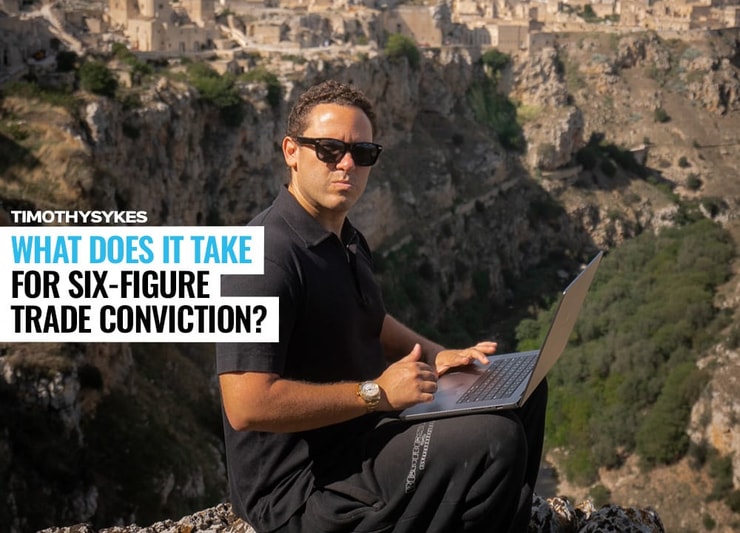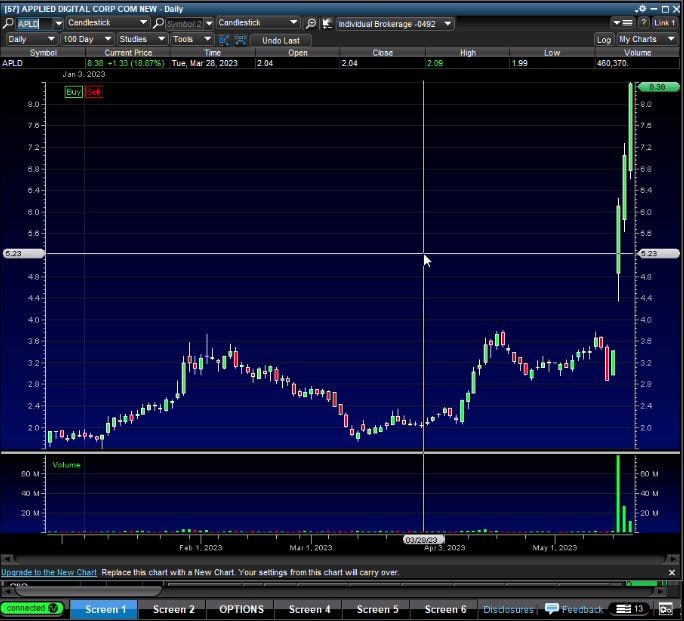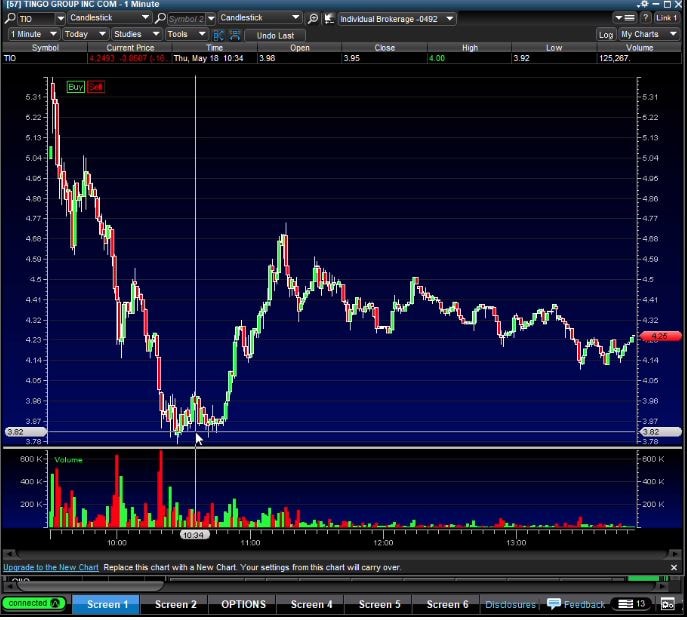My mentorship program has helped over 30 regular folks on their millionaire journey.
But that’s not all.
The program gets better every year.
You see, not only have I improved as a trader and coach, but many of my most successful students stick around, mentoring and sharing their trading ideas with the group.
One of those student-turned-mentors is Mark Croock.
Mark is up more than $4 million since he started trading well over a decade ago.
Last week he shared a video for Challenge members, explaining how he banked on symbols like APLD, GSIT, and TIO.
However, if you’re not a Challenge member, I’d still like you to learn from Mark’s lesson.
So I’m going to share some of it with you.
Mark made $107,283 on one options trade in MARA a few months ago. It was incredible, considering he spent just $60,000 on the calls and how they quickly gained 179%.
I’ll also share with you what gives Mark the conviction to go big on trades and how he qualifies for them.
Get Aggressive When You See The Right Plays Unfolding

2025 Millionaire Media, LLCUnlike Mark, I’ve kept my trading size relatively small this year.
And if the market remains hot, Mark believes there will be plenty of opportunities in the coming weeks.
The first thing you want to do is ask yourself:
What’s Working?
Mark saw big opportunities in the ticker symbol GSIT…
Why?
The stock went from $1.74 to $7.30 in just a week.
It has a relatively low float at 18 million shares and a high percentage of inside ownership at 30.9%.
However, it’s a blatant pump.
$GSIT longs be aware that it’s an mdb capital pump and also pumped by the same guy who said $VRAR is the most exciting company on the Nasdaq he’s seen in his 25 years of investing 😂… not saying it can’t squeeze shorts but it’s not up for fundamentally sound reasons imho
— Mark Croock (@thehonestcroock) May 17, 2023
And Mark believes it is being manipulated.
Managing risk on these types of trades is challenging because you’ll have these big bounces followed by some heavy pullbacks.
However, as long as AI remains the hot theme, he believes pumps, even blatant pumps in the AI space, will have a chance to move in this current market.
Especially if the market keeps panic-buying big tech stocks.
But if Mark could pick, he would rather trade stocks with real catalysts like APLD.
The company announced on the 16th that it signed its first major customer for its latest artificial intelligence cloud service.
The agreement is worth up to $180 million over a 24-hour period.
The stock was a multi-day runner with strong price action.
Mark felt like this could have been a trade for an aggressive long.
Why?
Because the AI theme has been working, tech has been on a monster rally, and risk appetite is high.
And while Mark admits to dropping the ball on APLD, he felt he did an excellent job trading TIO.
This one rallied on strong earnings… and then I think was getting pumped in a bunch of discord rooms.
Mark decided to trade it similar to how would…a panic dip buy.
It was the first red day, and after a sharp morning sell-off, Mark was able to buy some shares in the $3.90s and scalp out in the $4.30s.
Mark’s Tips For Building Trade Conviction

2025 Millionaire Media, LLC- Make sure we’re in a good market. Last week big tech stocks like NVDA, GOOGL, and MSFT rallied off the AI buzz. The strong performance by those stocks gave traders the courage to go after more speculative plays related to AI.
- Find Out What’s Working. Right now, AI and biotech stocks have been on fire. Try to figure out what is causing some of these moves. Traders will often look for similar stocks and catalysts, which could lead them to the next big winner.
- Take Your Shot If The Boxes Check. If everything lines up, don’t be scared to take your shot. Mark saw that the market was hot, AI plays were working, and many of the same patterns were repeating.
If you’d like to learn more about the program that helped Mark on his millionaire journey, click here to learn more.





Leave a reply